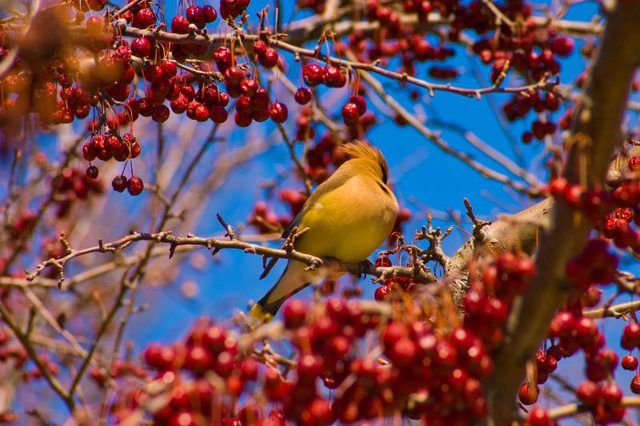Bulbs
Flower Basics
Flower Beds & Specialty Gardens
Flower Garden
Garden Furniture
Garden Gnomes
Garden Seeds
Garden Sheds
Garden Statues
Garden Tools & Supplies
Gardening Basics
Green & Organic
Groundcovers & Vines
Growing Annuals
Growing Basil
Growing Beans
Growing Berries
Growing Blueberries
Growing Cactus
Growing Corn
Growing Cotton
Growing Edibles
Growing Flowers
Growing Garlic
Growing Grapes
Growing Grass
Growing Herbs
Growing Jasmine
Growing Mint
Growing Mushrooms
Orchids
Growing Peanuts
Growing Perennials
Growing Plants
Growing Rosemary
Growing Roses
Growing Strawberries
Growing Sunflowers
Growing Thyme
Growing Tomatoes
Growing Tulips
Growing Vegetables
Herb Basics
Herb Garden
Indoor Growing
Landscaping Basics
Landscaping Patios
Landscaping Plants
Landscaping Shrubs
Landscaping Trees
Landscaping Walks & Pathways
Lawn Basics
Lawn Maintenance
Lawn Mowers
Lawn Ornaments
Lawn Planting
Lawn Tools
Outdoor Growing
Overall Landscape Planning
Pests, Weeds & Problems
Plant Basics
Rock Garden
Rose Garden
Shrubs
Soil
Specialty Gardens
Trees
Vegetable Garden
Yard Maintenance
How to Design Landscaping for a Ranch Style House
How to Design Landscaping for a Ranch Style House. Quiet doesn't mean dull. Designed to fit into the existing landscape rather than stand out from it, a ranch house generally presents a modest front facade. Respecting the long horizontal lines and topographic integration typical of ranch house design means creating subtle landscape designs based on...
Quiet doesn't mean dull. Designed to fit into the existing landscape rather than stand out from it, a ranch house generally presents a modest front facade. Respecting the long horizontal lines and topographic integration typical of ranch house design means creating subtle landscape designs based on shape, texture and seasonal changes. Landscaping for more private, backyard areas may be more lush and lively.
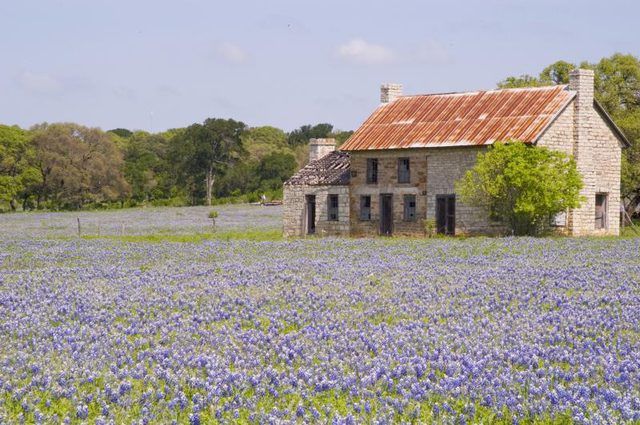
Ranch houses took their original inspiration from Mexican haciendas, houses whose thick, heat-resistant walls surrounded a courtyard. Modern ranch-style houses may feature large front-facing windows, but a relatively plain facade, long horizontal lines, unadorned entryway and low porch maintain some of the barrier older houses erected between public view and family activity. Following the architectural intentions of the design means choosing low plantings for the front yard. A mixture of evergreen and deciduous shrubs along the front of the house creates a framework of textures and relatively subtle color changes that shows off the lines of your house to best advantage.
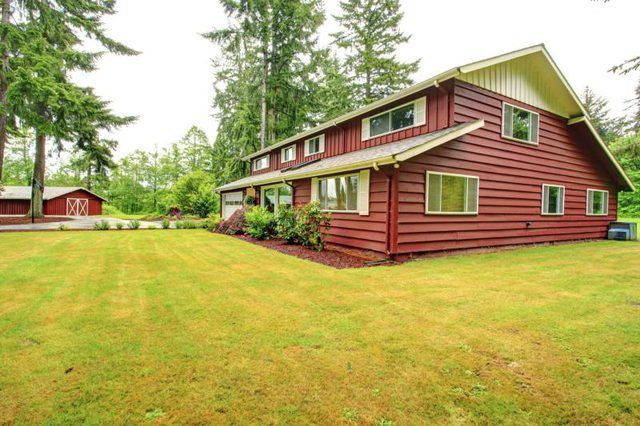
Frame the front yard with evergreens for year-round color. Suitable varieties depend on your climate, but most nurseries carry a variety. The juniper family (Juniperus spp.) illustrates the wide range of visual variations in a single variety. Chinese juniper "Shoosmith" (Juniperus chinensis "Shoosmith"), which grows in U.S. Department of Agriculture plant hardiness zones 4 through 9, has bushy dark green foliage, and grows 4 to 6 feet tall and wide. Creeping blue rug juniper (Juniperus horizontalis "Wiltonii"), which grows in USDA zones 3 through 9, has metallic blue scaly foliage which turns purplish in winter, it trails 2 to 3 feet. Low-growing "Daub's Frosted" juniper (Juniperus x pfitzeriana "Daub's Frosted"), which grows in USDA zones 4 through 9, has two-toned gold and blue-green foliage. It grows 15 inches tall with a spread of 5 feet.
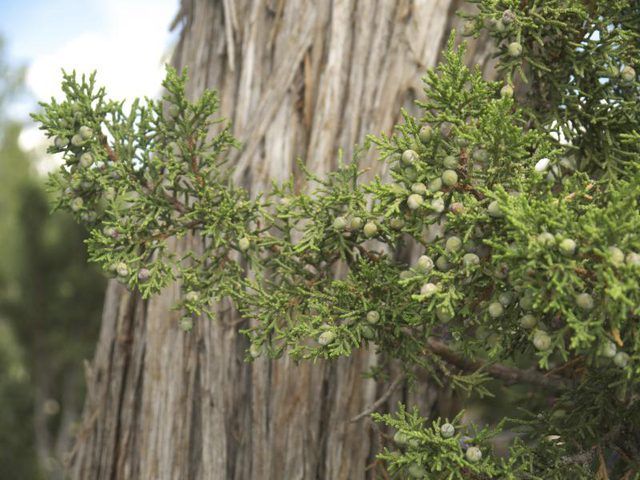
Small deciduous trees, like redosier dogwood (Cornus sericea), extend visual interest from spring flowers and summer foliage through brightly colored winter bark. This small tree grows in USDA zones 2 through 8, and reaches 7 to 9 feet tall, depending on variety. Instead of a single row of plants, make two or three staggered rows so your framework stays low but interesting in all seasons. Add flowering annuals or low-care blooming perennials for brighter color. For example, permanent borders of blanket flower (Gaillardia x grandiflora "Goblin") or threaded coreopsis (Coreopsis verticillata "Moonbeam"), both of which grow in USDA zones 3 through 9, bring low mounds of color to your sunny yard from June until frost.
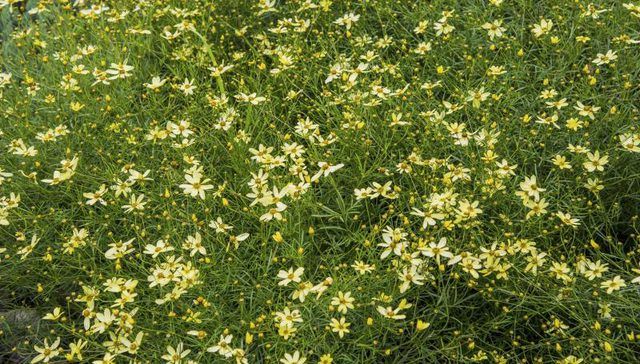
Reserve dramatic plantings and blasts of color for the backyard in a ranch-style house. Whether your ranch is I-, H- or L-shaped, one of the major intentions of the design was to shelter family activities from public view. Paving, whether a patio or more extensive hardscaping, like walls and water features, is an important element of ranch design. Plantings can be more sparse or lush than in the front yard and may well be shaped by play activities, specialty garden beds, and spaces to read, entertain or exercise. The original intent of ranch design was to blur lines between indoors and out, providing an outdoor room for home activities. This intent may be reflected in contrasts between front- and backyard landscaping.
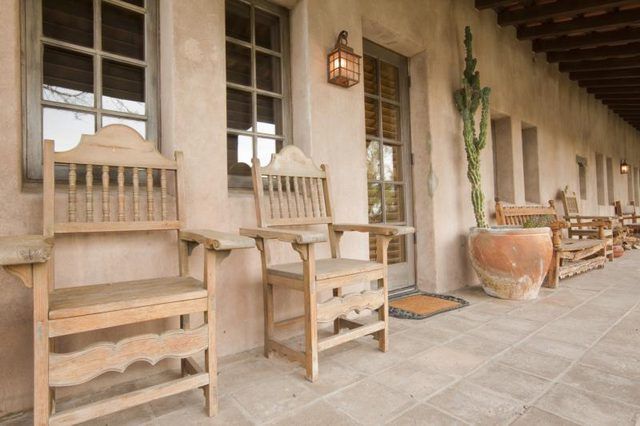
Factor in your house's low lines when choosing shade trees. Large trees, more than 40 feet tall when mature, make your house look small, and their shade may completely pass it by. Small to moderate-sized trees provide shade if planted 15 to 25 feet from the house. Small deciduous ornamentals, like an Allegheny serviceberry (Amelanchier laevis), which grows in USDA zones 4 through 9, can let sun warm a large window or patio in spring, fall and winter, while shading it from hot sun in summer.
